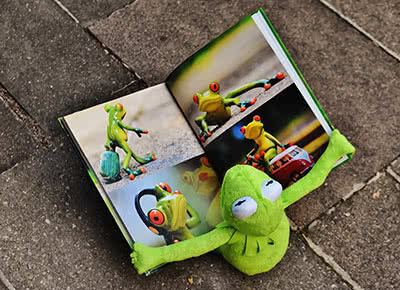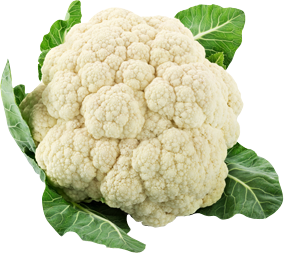In the late 90’s, we started seeing the first studies on ‘how website users read web content’. What they discovered is that we don’t. Instead of carefully reading information, website readers typically scan it. And since then, as smartphones have continued to become our primary mode of digesting information at any point in the day, fitting it into small pockets of free time, we’ve continued to develop our scanning skills.

Busy Bees
By nature, humans long to be seen, followed, agreed with, joined, and applauded. We are information-consumers, and the majority of us are highly social. Even during moments of peace, we find ourselves reaching for our phones, just to see who else in our little social circles are following, agreeing with, joining, and applauding.
The trick for web writers is to present information to their audience that captivates. Web readers (especially mobile readers) don’t invest time unless the situation is right (long bus ride, stuck in airport, coffee shop on their day off, etc.). And so, it’s up to the writer to find interesting ways to present their topic—even if that topic is something as dry as windshield fluid or plastic wrap.
Ways to keep people reading:
- Keep paragraphs short and to-the-point.
- Word your headings clever and succinct! (Would you prefer to read “This Week’s Statistical Report Shows Promise” or “Stats Kicked Butt This Week!”)
- There’s a lot of reasoning behind keeping them brief – check out this SEO post all about Page Titles »
- Apply eye-catching heading styles. (There are tons of web-friendly fonts out there, and a little colour never hurts!)
- Insert unique inline images every few paragraphs, to keep visual-dependent readers (like me) engaged
- Be interesting! Don’t be afraid to use fun analogies, metaphors, long and short sentences etc. Delight your readers!

The Wizardry Behind the Curtain
It’s not magic, but there is some real science behind the topic of ‘web reading’, and why it varies so much from the way we read other types of literature. Smartphone users are looking for quick information – they’re not there for pleasure. And so, if you are depending on your lengthy article or product description to lure more mobile readers, you’ll have to put a lot of effort into it.
Here’s what some smarties have discovered:
- A study in 2015 by the Pew Research Center revealed that the primary reasons people use smartphones are to look up information about health conditions, conduct online banking, research real estate, and perform job searches. Fewer than 18% use their phones to read articles. (Source: http://www.pewinternet.org/2015/04/01/chapter-two-usage-and-attitudes-toward-smartphones)
- Further, a study in 2008 by the Nielsen Norman Group revealed that, given the duration of an average page view, users have time to read, at most, 28% of the words on the page. (Source: https://www.nngroup.com/articles/website-reading/) – Which means I’ve already lost the interest of most people who attempted to read this article.
Let’s Talk About Text, Baby
Web writing is a science unto itself. It’s one of the core parts of search engine marketing (SEM), and can dominate the bulk of some companies’ marketing budgets, filling the spot that newspaper and magazine ad-writing used to dominate. There are many resources out there that help teach you how to write engaging page copy. Clearly, every piece of content you add to your website should be concise, and it should also be interesting enough to be shared by others. Otherwise, why waste time writing it? Sure, not every topic will be interesting to every person, BUT every topic can be written in a way that appeals to a wide audience.

Like all writing, be sure to run ALL of your page copy through spell-check. Web content is not less important than printed advertising; in fact, it should be considered even more important, since it can reach a far wider audience! Always ask a friend to look over your page copy before you publish it on the web. Spell-check doesn’t catch all the peculiarities of the English language—there are multiple ways to spell the same word, and confusing ways we punctuate.
Performing a bit of extra research on your topic before you publish will help infuse it with much more captivating content, and will help you retain the interest of a wider audience.
Give yourself a test: try writing one paragraph about a topic you know very little about, such as hammers, stilettos, ferrets, or cauliflower. Then, do it all over again, but research it first…
Here’s my test:
Before:
Cauliflower is a white vegetable with dark green leaves. Cauliflower plants grow in the ground. In most grocery stores, they can be found in the produce section year-round. Although their taste is bland, they are nice when sautéed with other vegetables or smothered in rich sauce.
After:
Cauliflower is an annual plant that reproduces by seed. With dark green leaves, and an edible white flesh, it’s a culinary staple in many cultures. It’s challenging to grow, like cabbage, and is grown primarily in China, and in warmer climates. Although most people are familiar with white cauliflower, it also comes in orange, green, and purple. The edible white flesh, or head, is sometimes called “curd”, since it has a similar appearance to cheese curd. An excellent source of dietary fibers, vitamins, potassium, and magnesium, cauliflower is quite tasty when sautéed with other vegetables, or smothered in rich sauce, but are rather bland on their own.
Scroll, Baby, Scroll
Don’t be afraid of how long some pages might become on a mobile device; pages that require a lot of scrolling actually make navigation easier, eliminating the extra clicks necessary to reveal content, and opening the door for more narrative approaches and simpler interaction models. You still need a solid amount of page copy in order for your customers to understand the details of your business. Besides, pages with lots of text are easier for Google to index, and that will earn you higher search rankings.
Although some designers and marketers still casually use the term “above the fold” when trying to explain the importance of keeping important information ‘near the top’ of a page, this expression is really only useful in print design. With the ever-changing multitude of screen sizes out there, it’s challenging to keep an object in the same spot on a page, on all devices. Nor should it, really; desktop computers and smartphones are different habitats.

Picture This
Because web design is continuing to evolve, the importance of having unique, high-quality imagery increases in importance all the time. Scattering quality photos, animations, or short videos throughout your text will do you a world of good. Giant blocks of text can feel daunting, and readers can visualize unfamiliar topics in tons of different ways if it’s not depicted accurately with words.
Imagery helps sell. There’s a reason why Amazon provides a photo of each product along with the description—often several photos, in a variety of angles, and one for each colour option. (After all, ‘red’ isn’t the same thing in everyone’s imagination.) Images prompt memory, giving us a way to remember and keep track of things we want to come back to later.
In a world where everyone is taking photos on their fancy smartphones, it’s no surprise that the web has become inundated with images. Just be sure to use professional photography on your website if you want to convey a sense of professionalism. Photographers spend years learning how to capture a moment on file, and how to illuminate the very soul of their subjects. They know how to work with light and shadow, how to create the perfect pose or scene, and know how to prevent distraction away from the subject. If your imagery isn’t professional, your page won’t read as professional.

Story Time
We encourage our clients to dedicate quality time to composing meaningful content for the web; content that helps a perfect stranger on the other side of the earth relate to you and want to buy your product. Take yourself back to your first years as a young child… Most likely, you enjoyed books back then, even if they were read to you and all you could understand were the pictures. Reading on the web is not much different; we skim and scan, visually searching quickly for things that we relate to, whether they are captivating photos or clever headings, then make a decision to read more or not. Powerful web writing = profitable web reading.
Thanks for reading! If you found this interesting, drop us a line!

